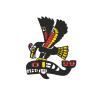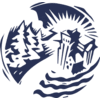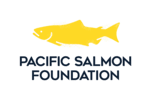Susan Down, Local News Eye Cowichan, September 20, 2016
 Last week I watched a harbour seal cruise to the mouth of the Cowichan River and then capture and eat a hefty salmon, its tail still flapping until the end. The predatory seals are in position because they know that Cowichan Bay is teeming with fish waiting to begin the arduous journey up the river to spawn. With water levels extremely low this year, the annual salmon spectacle will be even more perilous.
Last week I watched a harbour seal cruise to the mouth of the Cowichan River and then capture and eat a hefty salmon, its tail still flapping until the end. The predatory seals are in position because they know that Cowichan Bay is teeming with fish waiting to begin the arduous journey up the river to spawn. With water levels extremely low this year, the annual salmon spectacle will be even more perilous.
Humans are doing what they can to assist. The river’s north arm has become completely plugged since last year. This week, excavation has begun to remove about 15,000 cubic metres of gravel from river bed.
 On Tuesday in Lake Cowichan, work began on placing 20 submersible pumps underwater next to the weir (see previous stories). These pumps will ensure that the flow of water in the river continues if the lake level drops too far. Recent rain was enough to push the estimated start date from late September to about Oct. 9, said Catalyst spokesperson Brian Houle. In most years, that date is late enough for the fall rains to replenish the lake, but with dry weather forecast, pumps may be necessary after all.
On Tuesday in Lake Cowichan, work began on placing 20 submersible pumps underwater next to the weir (see previous stories). These pumps will ensure that the flow of water in the river continues if the lake level drops too far. Recent rain was enough to push the estimated start date from late September to about Oct. 9, said Catalyst spokesperson Brian Houle. In most years, that date is late enough for the fall rains to replenish the lake, but with dry weather forecast, pumps may be necessary after all.
Solving one problem can create others. Cowichan Tribes fisheries representatives are concerned that chinook from a summer run that are currently living in Cowichan Lake will need help moving back into the river system to spawn, especially since all the weir gates will be closed. The rare lamprey eels in the lake need protection as well, and mesh around the pumps will keep them from harm.
 Seals aren’t the only ones with eyes on the salmon. A counting fence is taking shape this week downstream from Allenby Road bridge. Funded by federal DFO in partnership with Cowichan Tribes, the fence blocks most of the channel, forcing fish to swim through a narrow channel where a video camera can identify them. The data is them recorded by staff 24 hours a day.
Seals aren’t the only ones with eyes on the salmon. A counting fence is taking shape this week downstream from Allenby Road bridge. Funded by federal DFO in partnership with Cowichan Tribes, the fence blocks most of the channel, forcing fish to swim through a narrow channel where a video camera can identify them. The data is them recorded by staff 24 hours a day.
 In the mid-river section, property owner Parker Jefferson has offered to house a DIDSON (it stands for dual-frequency identification sonar) and its black box of electronics. Like the fish finders that anglers use to look for schools of fish, this “acoustic camera” can detect shapes due to very high frequency sound waves. A representative from Cowichan Tribes downloads the recordings twice a week and then records the data on a spreadsheet. So far this year, about 150 chinook salmon have been detected. “The next thing is to figure out if they are genetically distinct from the fall run,” said Jefferson. He marvels at the tenacity of the salmon as they fight their way upriver. “These salmon are mostly out of the water (as they swim),” he said. “They are tough creatures.”
In the mid-river section, property owner Parker Jefferson has offered to house a DIDSON (it stands for dual-frequency identification sonar) and its black box of electronics. Like the fish finders that anglers use to look for schools of fish, this “acoustic camera” can detect shapes due to very high frequency sound waves. A representative from Cowichan Tribes downloads the recordings twice a week and then records the data on a spreadsheet. So far this year, about 150 chinook salmon have been detected. “The next thing is to figure out if they are genetically distinct from the fall run,” said Jefferson. He marvels at the tenacity of the salmon as they fight their way upriver. “These salmon are mostly out of the water (as they swim),” he said. “They are tough creatures.”
 Email
Email



